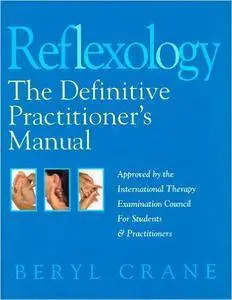Reflexology: The Definitive Practitioner's Manual by Beryl Crane
1997 | ISBN: 1862041253, 1862043361 | English | 443 pages | EPUB | 8 MB
1997 | ISBN: 1862041253, 1862043361 | English | 443 pages | EPUB | 8 MB
This reflexology text includes coverage of such topics as: the art and practice of reflexology; the physiological and energetic theories of reflexology; the mapping of organs and body systems onto the foot; hand reflexology; taking case histories and patient care; and running a successful practice. Reflexology is the ancient technique of treating the whole body by pressing reflex points on the foot which affect different organs in the body through the meridian system and through different zones relating to each organ. This reflexology text includes coverage of such topics as: the art and practice of reflexology; the physiological and energetic theories of reflexology; the mapping of organs and body systems onto the foot; hand reflexology; taking case histories and patient care; and running a successful practice. Part 1 A brief history of reflexology: Egyptian origins; Chinese origins; the history of the zone concept. Part 2 A holistic approach to medicine: the concept of holistic medicine; theories and philosophies; what is energy?; how the nervous system works; meridians and nerves; the zones and the divisions of the feet and hands; western medicine and complementary medicine working together. Part 3 Basics of consultation and diagnosis: the fundamentals of good practice; clinical observation; questioning; listening; the case history; diagnosis; recommending treatment; support and care of the patient. Part 4 Basics of the reflexology treatment session: preparation of the client and yourself; relaxation techniques, support techniques and protective hold procedures; "back-up" or cross reflexes, or zone-related reflexes; interpretation of painful reflex points; reactions to expect during treatment; reaction that may arise between treatments. Part 5 The feet: anatomy and biomechanics of the foot; observation and analysis; the systems of the body and their respective zones on the feet treatment procedure; foot exercises. Part 6 The hands: history and theory of hand treatment; anatomy and physiology; observation and analysis; disorders; treatment procedure; hand exercises. Part 7 The ear, face and head: the ear; the face and head. Paty 8 A–Z of disorders of the body: how to use this chapter. Part 9 Disorders of the skin – a practical application of reflexology: anatomy and physiology; disorders; analysis and treatment; skin care routine. Part 10 Stress: what is stress?; physiology of stress; stress as the cause of illness; physical and mental indicators of stress; the role of reflexology in stress; simple stress management techniques. Part 11 Natural nutrition: what is nutrition?; components of a good diet; additives; healthy lifestyle; what is an allergy?; disorders where diet and reflexology work together. Part 12 The reflexology practice: setting up the practice; ethics; professionalism; making an introductory presentation to an audience. Appendices: statutory support systems; first aid in the treatment room; complemetary therapies that may assist reflexology; astrology and health; some questions that students may be asked in an examination; useful addresses.



